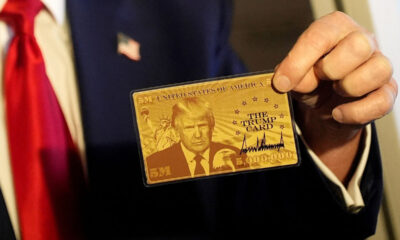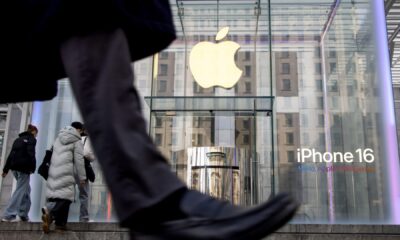Hobo_018 | E+ | Getty Images
U.S. stocks saw wild market swings on Monday as the tariff sell-off continued.
For some investors, it may be tempting to head for the exits rather than ride those ups and downs.
Yet investors who sell risk missing out on the upside.
“When there’s a bad sell-off, that bad sell-off is typically followed by a strong bounce back,” said Jack Manley, global market strategist at JPMorgan Asset Management.
“Given the nature of this sell-off, that likelihood for that bounce back, whenever it occurs, to be pretty concentrated and pretty powerful is that much higher,” Manley said.
More from Personal Finance:
Avoid ‘dangerous’ investment instincts amid tariff sell-off
What to know before trying to ‘buy the dip’
20 items and goods most exposed to tariff price shocks
The market’s best days tend to closely follow the worst days, according to JPMorgan Asset Management’s research.
In all, seven of the market’s 10 best days occurred within two weeks of the 10 worst days, according to JPMorgan’s data spanning the past 20 years. For example, in 2020, markets saw their second-worst day of the year on March 12 at the onset of the Covid pandemic. The next day, the markets saw their second-best day of the year.
The cost of missing the market’s best days
Investors who stay the course fare much better over time, according to the JPMorgan research.
Take a $10,000 investment in the S&P 500 index.
If an investor put that sum in on Jan. 3, 2005, and left that money untouched until Dec. 31, 2024, they would have amassed $71,750, for a 10.4% annualized return over that time.
Yet if that same investor had sold their holdings — and therefore missed the market’s best days — they would have accumulated much less.
For the investor who put $10,000 in the S&P 500 in 2005, missing the 10 best market days would bring their portfolio value down from $71,750 had they stayed invested through the end of 2024 to $32,871, for a 6.1% return.
The more that investor moved in and out of the market, the more potential upside they would have lost. If they missed the market’s best 60 days between 2005 and 2025, their return would be -3.7% and their balance would be just $4,712 — a sum well below the $10,000 originally invested.
How investors can adjust their perspective
Yet while investors who stay the course stand to reap the biggest rewards, we’re wired to do the opposite, according to behavioral finance.
Big market drops can put investors in fight or flight mode, and selling out of the market can feel like running toward safety.
It helps for investors to adjust their perspective, according to Manley.
It wasn’t long ago that the S&P 500 was climbing to new all-time highs, reaching a new 5,000 milestone in February 2024, and then climbing to 6,000 for the first time in November 2024.
At some point, the index will again reach new all-time records.
However, investors tend to expect tomorrow to be worse than today, Manley said.
It would help for them to adjust their perspective, he said.
In 150 years of stock market history, there have been wars, natural disasters, acts of terror, financial crises, a global pandemic and more. Yet the market has always eventually recovered and climbed to new all-time highs.
“If that becomes what you’re looking at, kind of the light at the end of the tunnel, then it becomes a lot easier to stomach the day in, day out volatility,” Manley said.
Advisor: Ask yourself this one key question
When markets hit bottom at the onset of the Covid pandemic, Barry Glassman, a certified financial planner and the founder and president of Glassman Wealth Services, said he asked clients who wanted to cash out one question: “Two years from now, do you think the market is going to be higher than it is today?”
Universally, most said yes. Based on that answer, Glassman advised the clients to do nothing.
Today, the markets have not fallen as far as that Covid market drop. But the question on the two-year outlook — and the resulting response to generally stay put — is still relevant now, said Glassman, who is also a member of the CNBC FA Council.
It’s also important to consider the purpose for the money, he said. If a client in their 50s has money in retirement accounts, those are long-term dollars that over the next 10 to 15 years will likely outperform in stocks compared to other investment choices, he said.
For investors who want to reduce risk, it can make sense, he said. But that doesn’t mean cashing out completely.
“You don’t need to go to 0% stocks,” Glassman said. “That’s just not prudent.”


 Economics1 week ago
Economics1 week ago
 Economics1 week ago
Economics1 week ago
 Blog Post1 week ago
Blog Post1 week ago
 Economics1 week ago
Economics1 week ago
 Economics1 week ago
Economics1 week ago
 Economics1 week ago
Economics1 week ago
 Personal Finance6 days ago
Personal Finance6 days ago
 Personal Finance1 week ago
Personal Finance1 week ago












